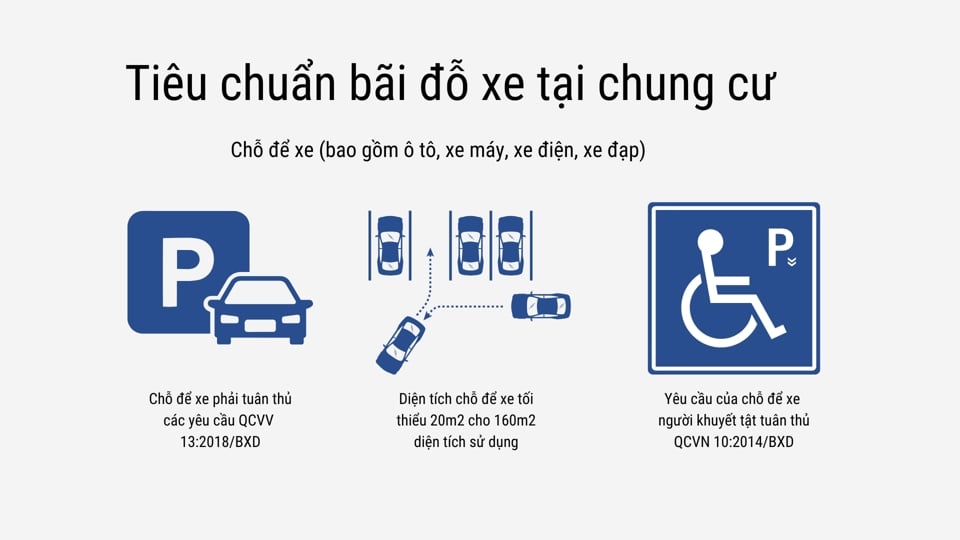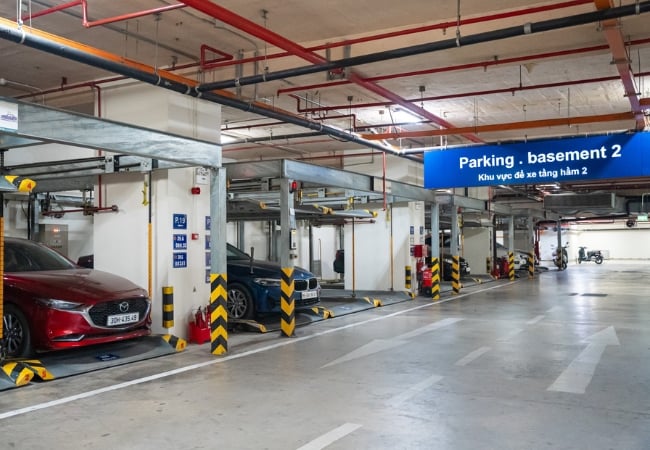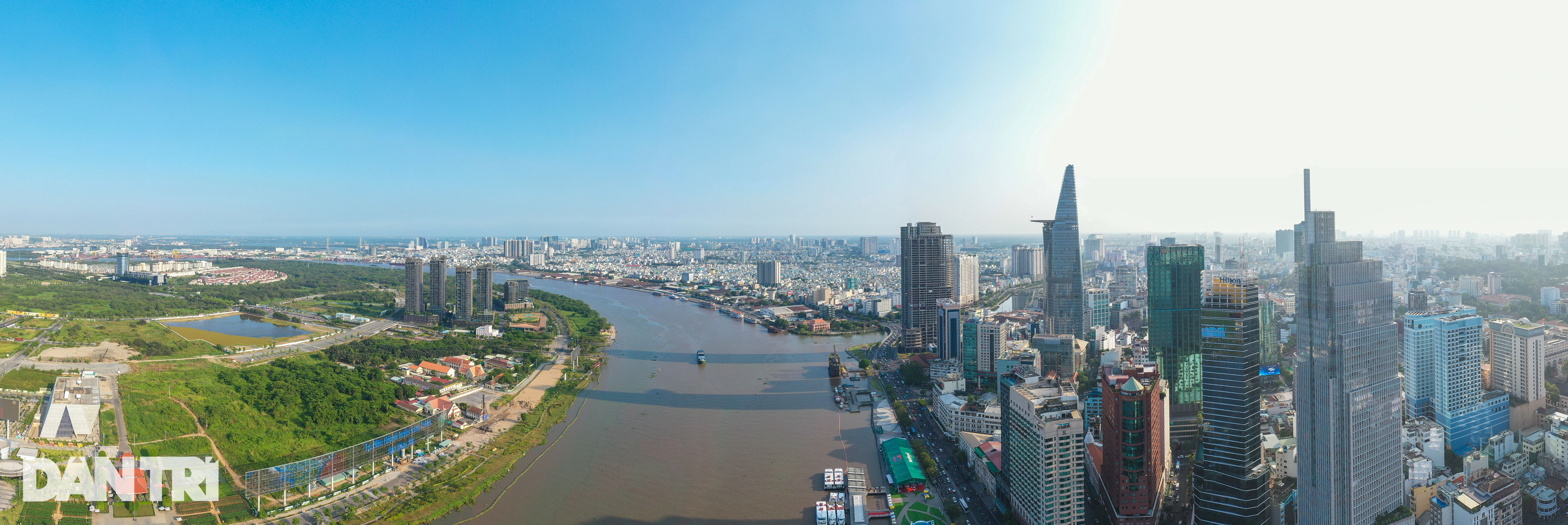However, is investing millions of dollars to build these automatic parking lots really a wise move, or just a risky gamble in the digital age?
The numbers speak for themselves.
According to statistics from Vietnam News Agency, the urbanization rate in Vietnam is about 40% and is expected to reach 45% by 2025. This leads to an increasing demand for high-rise housing and parking space.
This situation is particularly serious, as in big cities like Hanoi and Ho Chi Minh City, the density of private vehicles increases rapidly at a rate of 10 - 12% per year. In Hanoi, the number of newly registered cars averages about 20,000 per month, while the land fund for parking only meets about 6 - 10% of the actual demand.
Where does this wave come from?
As urbanization and the number of private vehicles increase rapidly, while land is increasingly scarce and expensive, optimizing parking space becomes a major challenge. This encourages businesses to develop smart, automated technology solutions to maximize space, while improving user experience and meeting increasingly stringent national technical standards.
In Vietnam, the construction of dense apartment buildings has led to many consequences such as traffic congestion, vehicles parking "indiscriminately" on the road, etc. To minimize the above problems, the Government has issued QCVN 04:2021/BXD with strict regulations on parking standards in apartment buildings (effective from July 5, 2021 and replacing Circular 21/2019/TT-BXD).
In addition, QCVN 04:2021/BXD also mentions that apartment parking lots must comply with the requirements of:

- For apartments: Including internal garage/parking lot - minimum 25m2 for 4 apartments and no more than 20m2/100m2 of total apartment usable area. Vehicles such as motorbikes and bicycles require a minimum of 6m2/apartment.
- For social housing, resettlement and low-income housing: Motorcycle/bicycle standards are the same as apartment standards, but parking standards need to meet 60% of the standards for apartments.
- Mixed-use apartment (apartment and office): Parking system must meet a minimum of 20m2/160m2 of usable area.
Smart parking wave in Vietnam
The wave of smart parking in Vietnam started in 2009, when the first project was completed at BIDV Tower, 194 Tran Quang Khai, Hanoi. Notably, after nearly 15 years of operation, this system is still operating stably, marking the success of the XIZI brand in providing smart parking solutions in Vietnam.

This wave continues to grow strongly in the period 2020 - 2024, with many large-scale projects being implemented in all regions of the North and South.
In Ho Chi Minh City, projects such as the luxury apartment building Masterise Ba Son (District 1) with nearly 800 parking spaces and the DeLaSol building (District 4) with nearly 300 parking spaces.
In Hanoi, HACC1 Le Van Luong apartment building (more than 200 spaces since 2017), Tien Bo Plaza project impresses with a scale of more than 600 parking spaces, integrating modern technologies such as: Fully automatic vehicle management technology, multi-point parking fee payment based on real time, software for managing - monitoring the status of smart parking system,...
Smart parking wave in other countries
The wave of smart parking development in the world originated in 1905 in Paris (France), when the world's first automatic parking garage, Garage Rue de Ponthieu, was born. This was a technological breakthrough at that time, using an electric elevator system to transport cars to upper floors, marking the beginning of the era of smart parking.
In Europe, from the 1920s to 1930s, major cities such as London and Berlin began to apply semi-automatic parking systems. By the 1950s, Germany and Switzerland took the lead with fully automatic parking technology, integrating smart parking with public transport systems and smart urban solutions.
In Asia, Japan has been a pioneer in this wave since the 1960s with its rotating tower parking system. Currently, Japan is focusing on GREEN smart parking systems that do not pollute the environment and maximize parking space. Meanwhile, Korea launched "K-Parking" combining robotics, AI and blockchain; Chinese smart cities integrate 5G and Edge Computing, while developing many new technological features,...
Singapore is the first country in Southeast Asia to implement the Marina Bay Sands project with 2,000 parking spaces, the largest in the region. Faced with the scarcity of land, more than 90% of investors in the lion island have chosen a completely smart parking solution, typically CapitaLand with the CapitaSpring and Raffles City projects. And it is a coincidence that this leading Singaporean real estate group is also the unit that has been developing two projects, DeLaSol and Lumi luxury apartments in Vietnam.
Leading Technology in the New Era of Smart Parking
The remarkable development of modern technologies such as BIG DATA, cloud computing, artificial intelligence (AI), Internet of Things (IoT) and mobile payments, etc. has been creating a revolution in the smart parking industry. Especially with the support of 5G network infrastructure, parking solutions are becoming increasingly smarter and more efficient.
Pioneering brands such as XIZI iParking (China), Scheidt & Bachmann (Germany), Amano McGann (USA) are leading the trend of smart parking worldwide. These companies own exclusive technology, allowing for efficient management and operation of parking lots, saving costs optimally. These innovations not only improve parking lot performance but also contribute to shaping the future of smart, sustainable urban transportation.
In Vietnam, the wave of smart parking technology is receiving many positive responses. A number of pilot projects have been deployed in major cities such as Hanoi, Ho Chi Minh City, Da Nang, etc. However, widespread application still faces many challenges in terms of financial resources, urban planning and public awareness. Is it true that if Vietnam does not quickly catch up with the trend, it is at risk of falling behind other countries in the region? If you are an investor, will you take the lead in smart parking technology or wait for the right opportunity?
Source: https://kinhtedothi.vn/bai-do-xe-tu-dong-don-dau-lan-song-cong-nghe-hay-bi-bo-lai-phia-sau.html



![[Photo] Dong Ho Paintings - Old Styles Tell Modern Stories](https://vstatic.vietnam.vn/vietnam/resource/IMAGE/2025/3/29/317613ad8519462488572377727dda93)
![[Photo] Prime Minister Pham Minh Chinh chairs meeting to urge highway projects](https://vstatic.vietnam.vn/vietnam/resource/IMAGE/2025/3/29/6a3e175f69ea45f8bfc3c272cde3e27a)


![[Photo] Prime Minister Pham Minh Chinh and Brazilian President Luiz Inácio Lula da Silva attend the Vietnam-Brazil Economic Forum](https://vstatic.vietnam.vn/vietnam/resource/IMAGE/2025/3/29/f3fd11b0421949878011a8f5da318635)












































































Comment (0)